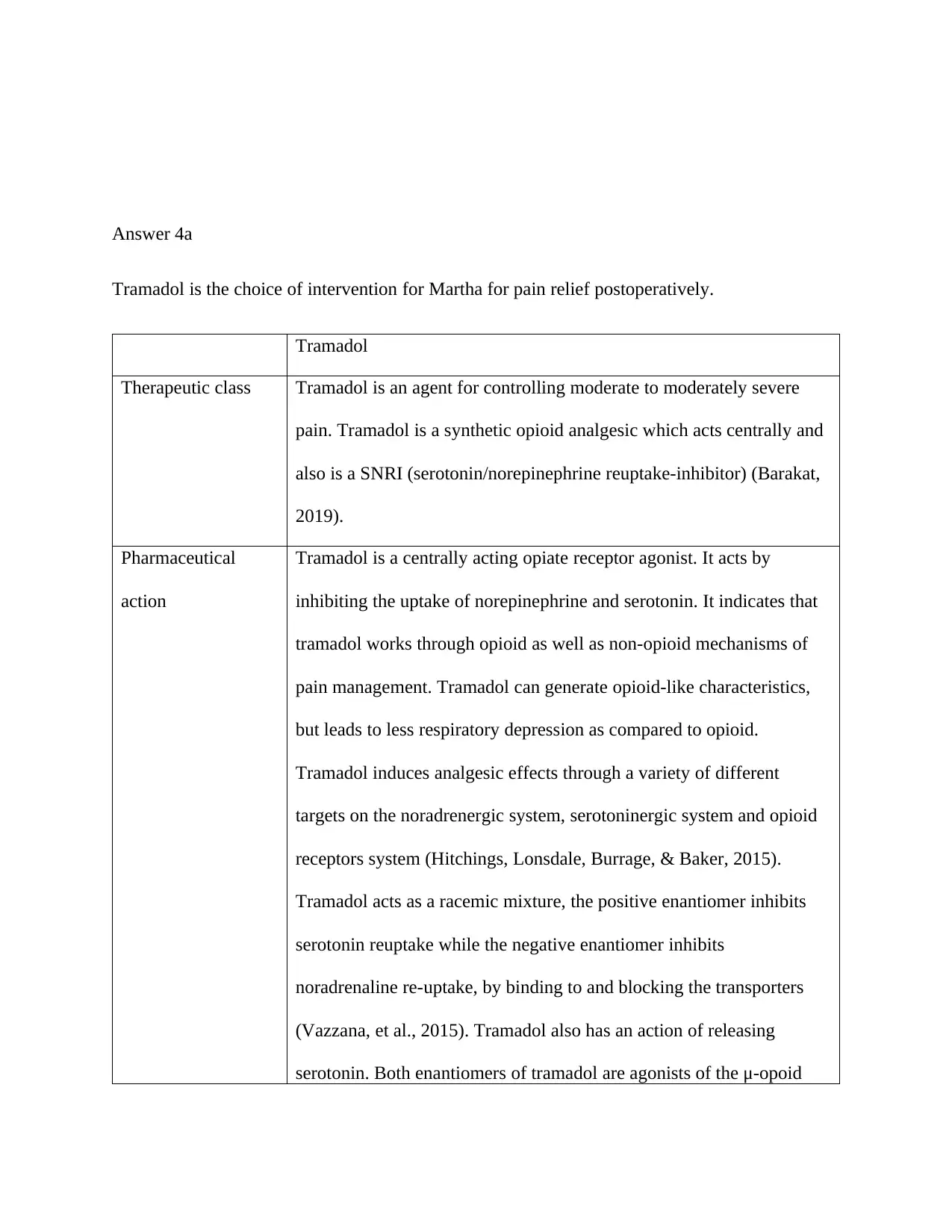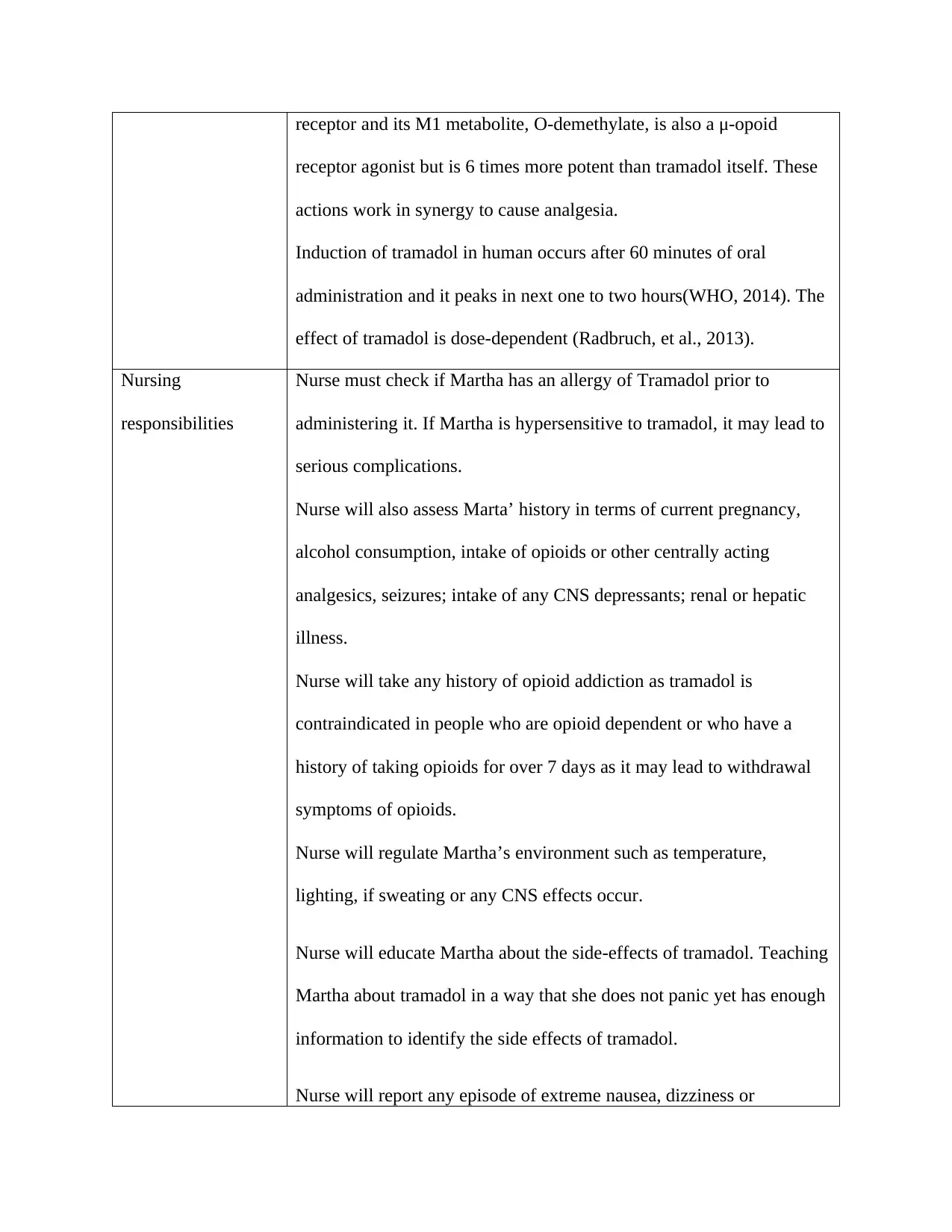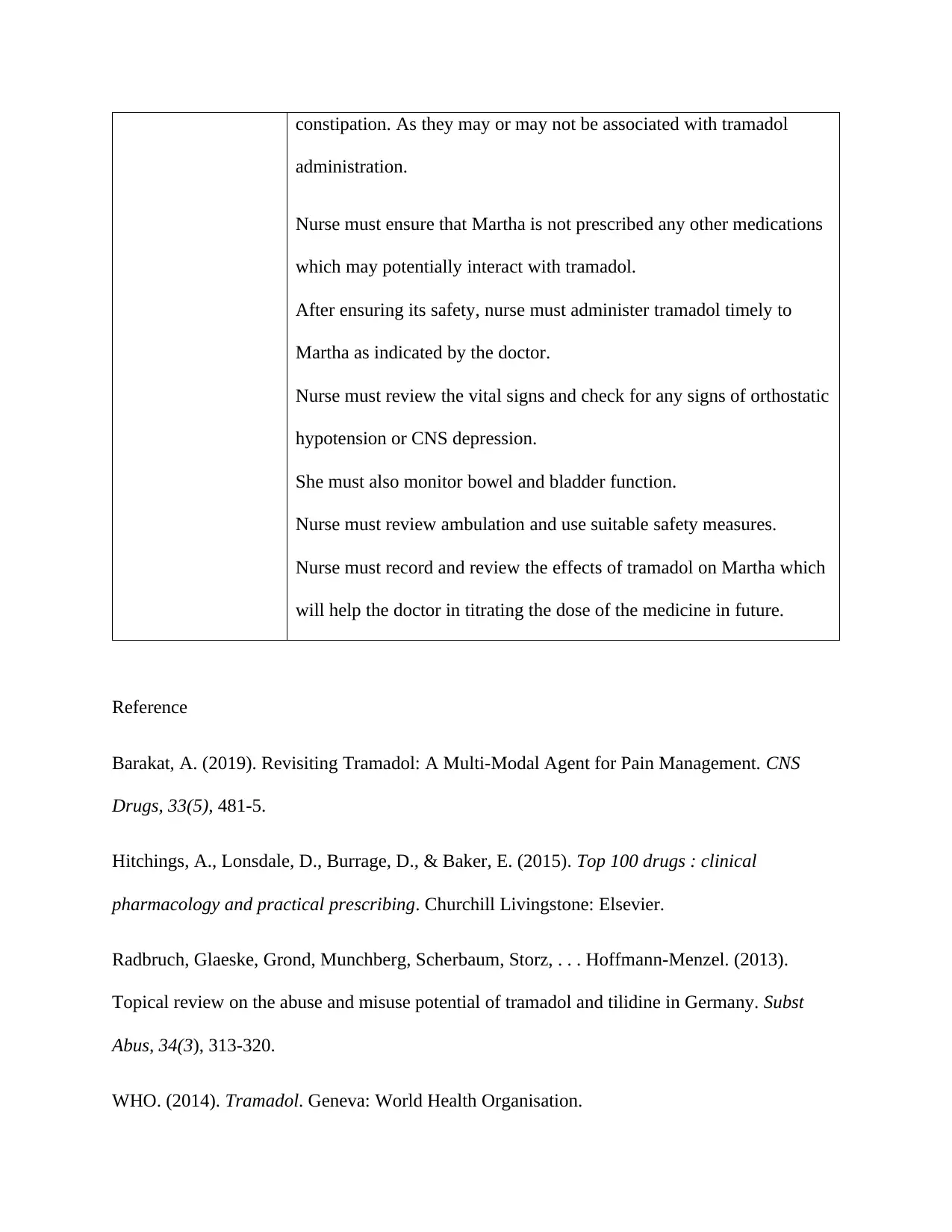Pharmacological and Nursing Implications of Tramadol for Martha's Pain
VerifiedAdded on 2022/09/27
|4
|745
|18
Homework Assignment
AI Summary
This assignment examines the use of tramadol for postoperative pain management in the case of Martha Myles, a patient who sustained injuries in a car accident. It details tramadol's therapeutic class as a centrally acting synthetic opioid analgesic and SNRI, its pharmaceutical action involving the inhibition of norepinephrine and serotonin reuptake, and its mechanism of action on opioid, noradrenergic, serotoninergic, and opioid receptor systems. The assignment also outlines crucial nursing responsibilities, including assessing for allergies, medical history, and potential drug interactions; educating the patient about side effects; administering the medication timely; monitoring vital signs; and documenting the effects of tramadol to guide future dosage adjustments. References to relevant research papers are included to support the information provided.
1 out of 4







![[object Object]](/_next/static/media/star-bottom.7253800d.svg)